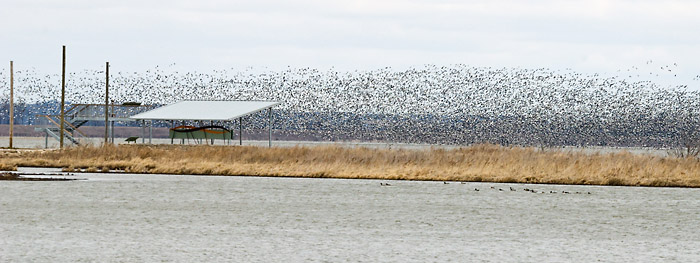Peoria Audubon Society is a local affiliate of both:
National Audubon Society & Illinois Audubon Society

Birding the Illinois River - March 2012
Photo Gallery:
Partnership with Peoria Park District: 03-March-2012 Previous Page
The numbers of ducks and geese at Sand Lake were simply astounding. Most of the images on these web pages are highly cropped as viewing with a spotting scope was "for the most part" mandatory. The Northern Pintails and Mallards in the image below were perhaps 1/4 mile away.
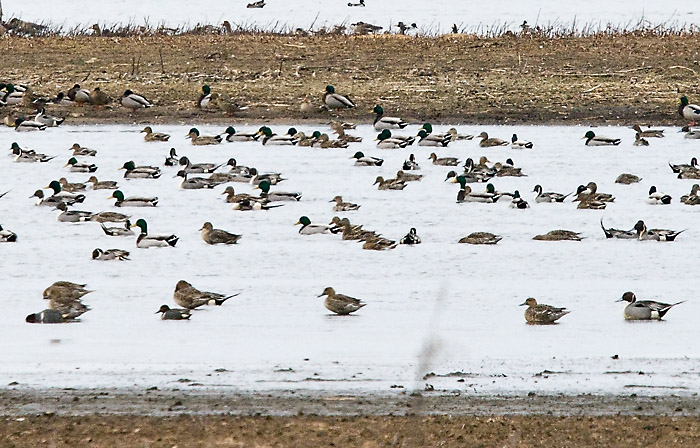
Northern Pintails and Mallards at Sand Lake near Havana, IL
In the image below, many of the Greater White-fronted Geese took flight. It is not known if we spooked them, as they were at least 1/4 mile away.
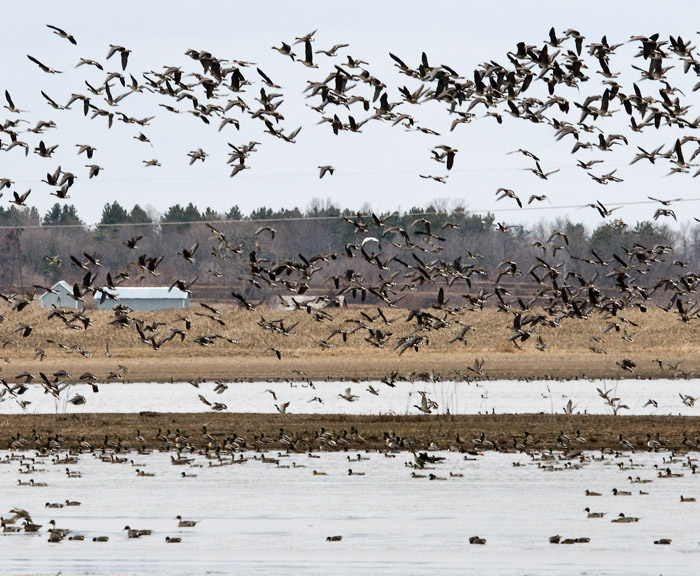
Greater White-fronted Geese Taking Flight
In highly cropped image below, Greater White-fronted Geese were coming in for a landing on the water. Note how much larger than the Northern Pintail ducks they are.
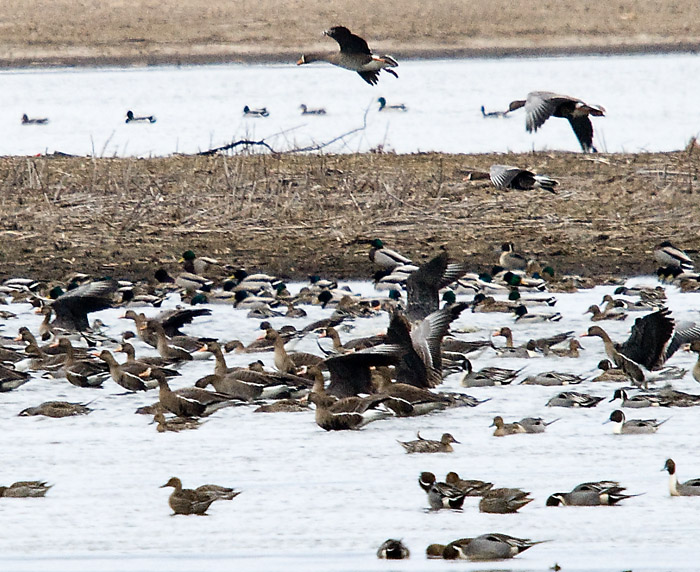
Flying Greater White-fronted Geese at Sand Lake
After watching all the ducks and geese at Sand Lake, we drove a couple of miles back to Havana, IL where the Peoria Park District made arrangements at Grandpa's. It was rather nice of the PPD to have the light lunch of a sandwich or wrap with pasta and a cookie already arranged.
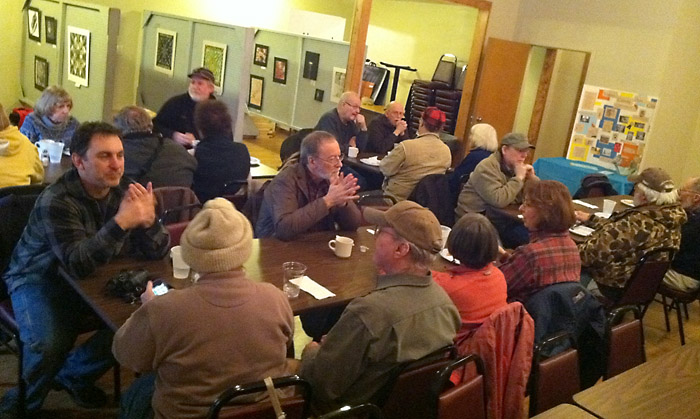
Relaxing After Lunch at Grandpa's in Havana, IL
After getting warmed up from the blustery wind, we headed on to the Emiquon Restoration. This wetland is one of the largest floodplain restoration projects in the Midwest. And it is funded almost entirely by donations to The Nature Conservancy.
First up, we had a chance to see several Bufflehead ducks. These small ducks are renowned by their rather distinctive black and white head. Actually, if we had better lighting, the "black" might also show a black and green gloss.
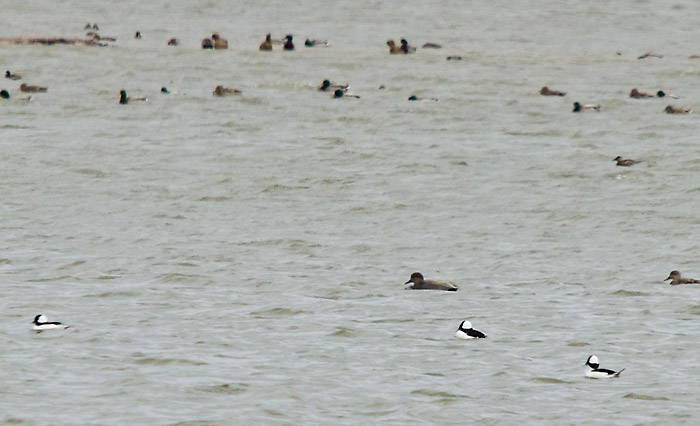
Bufflehead and Other Ducks at Emiquon
And perhaps a mile away was a massive flock of Snow Geese that was almost too large to estimate.
Thousands of Snow Geese at Emiquon (larger 1200x536)
Some estimates were as low as 10 thousand Snow Geese, with higher estimates of perhaps 50 thousand.
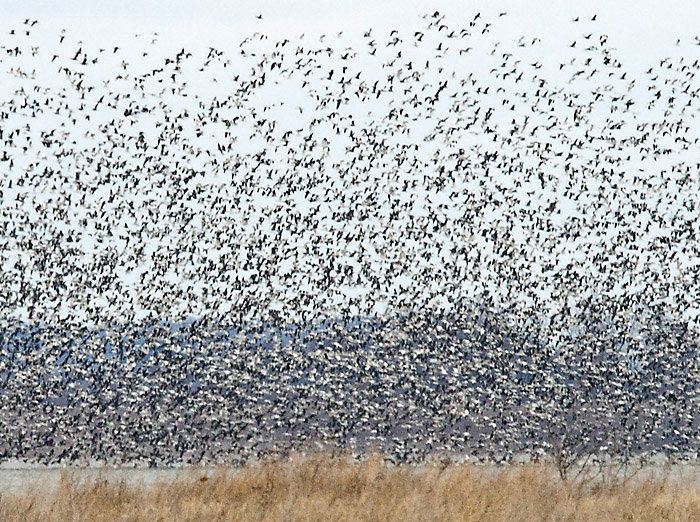
Thousands of Snow Geese at Emiquon Restoration
In any case, these very skittish geese flew in flocks that appeared as a dense fluid-like movement.
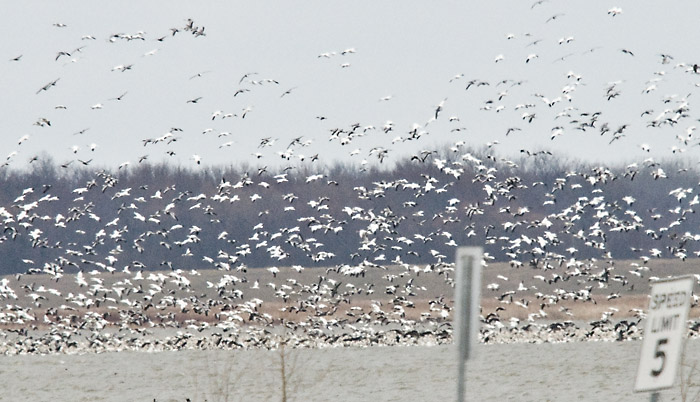
Snow Geese Landing at Emiquon Restoration
Constantly in motion, many of the geese kept taking off and landing in a giant "flotilla" of movement and chatter.
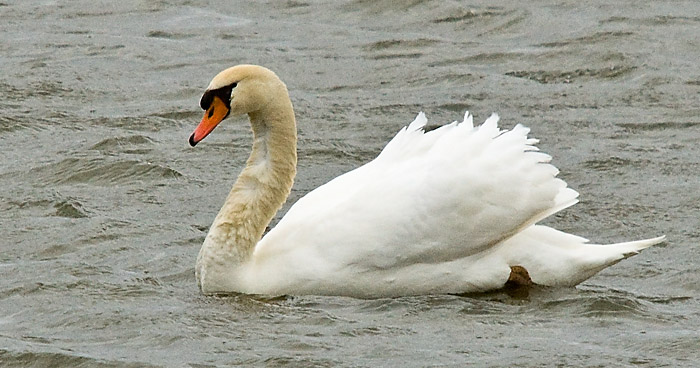
Mute Swan Exhibiting Threat Display at Emiquon
A little closer to the group was the above Mute Swan that was exhibiting a threat display with the uplifted wings.
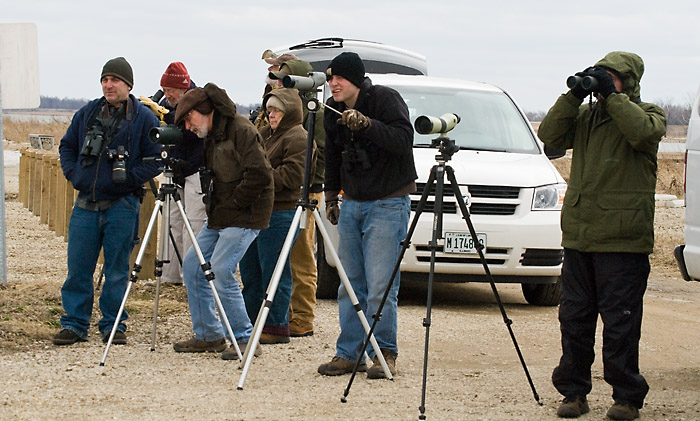
Birders Scoping the Action at Emiquon
Whether looking at the distant Snow Geese or ducks, spotting scopes were essential for getting a good view. As we were starting to leave Emiquon, we saw a small flock of birds fly by and land in a nearby shrub. On closer examination, one can see the black cheek patches of the Eurasian Tree Sparrows.
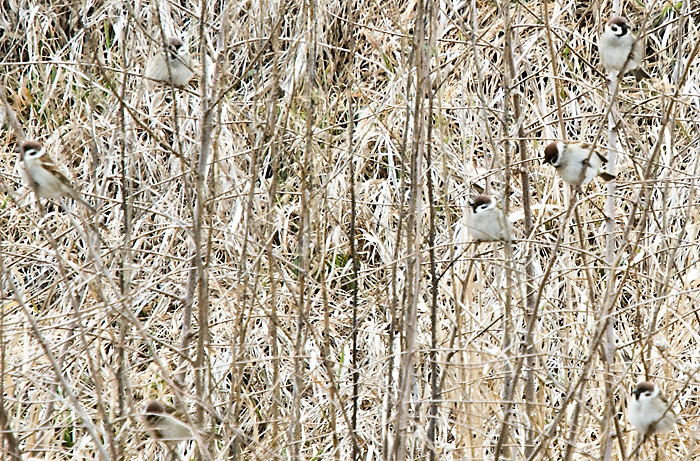
Flock of Eurasian Tree Sparrows at Emiquon
Maury explained that these small sparrows are a native of Europe and much of Asia. They were introduced to St. Louis, Missouri in 1870. Ever since, the range of these birds has been expanding.
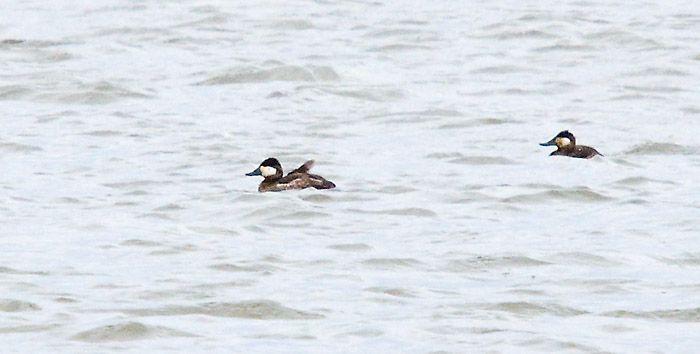
Ruddy Ducks at Emiquon Restoration
While we were at Emiquon, we had a chance of looking at a few Ruddy Ducks. These small ducks are identified by their distinctive white patch on the side of their head and, although not in the above images, upturned tail feathers.
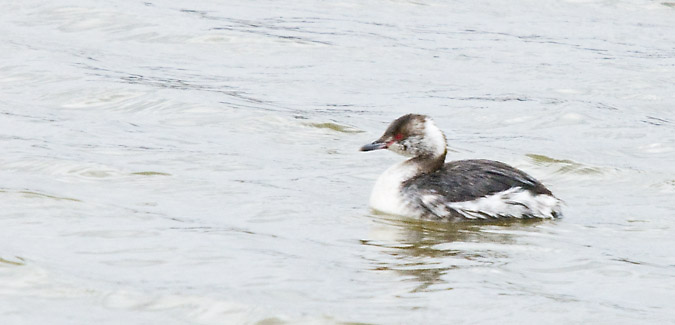
Horned Grebe at Emiquon Restoration (adult non-breeding plumage)
While at Emiquon, it was a rare treat to see a Horned Grebe. Although still in the non-breeding plumage, this bird will later develop significantly more distinctive plumage as it continues to head toward northern Canada and Alaska.

White Tailed Deer at Emiquon
At one place at Emiquon we veered off the road toward the Emiquon Office. And, in doing so we surprised a few White-tailed Deer. They briefly stopped in their escape to look at us.
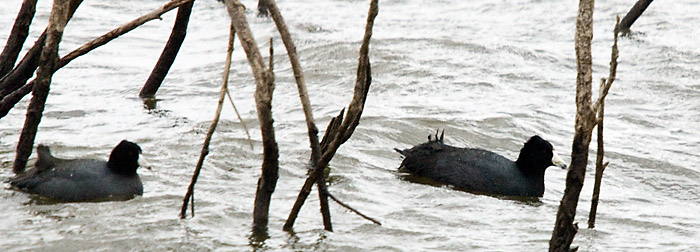
American Coots at Emiquon
With their distinctive white beaks, American Coots were in several locations.
The Peoria Audubon Society wishes to thank Mike Miller, JD Russell, and Mike Ingram of the Peoria Park District for taking the time to organize the wheels and lunch for the trip. We would also like to thank Maury Brucker for acting as our gracious host and knowledgeable guide to help explain what were were attempting to look at. Even though the birds sometimes seemed a long distance away. Having a large number of people share their spotting scopes helped create an enjoyable experience that also was a great learning opportunity
Photos courtesy of Dennis Endicott - All rights reserved
